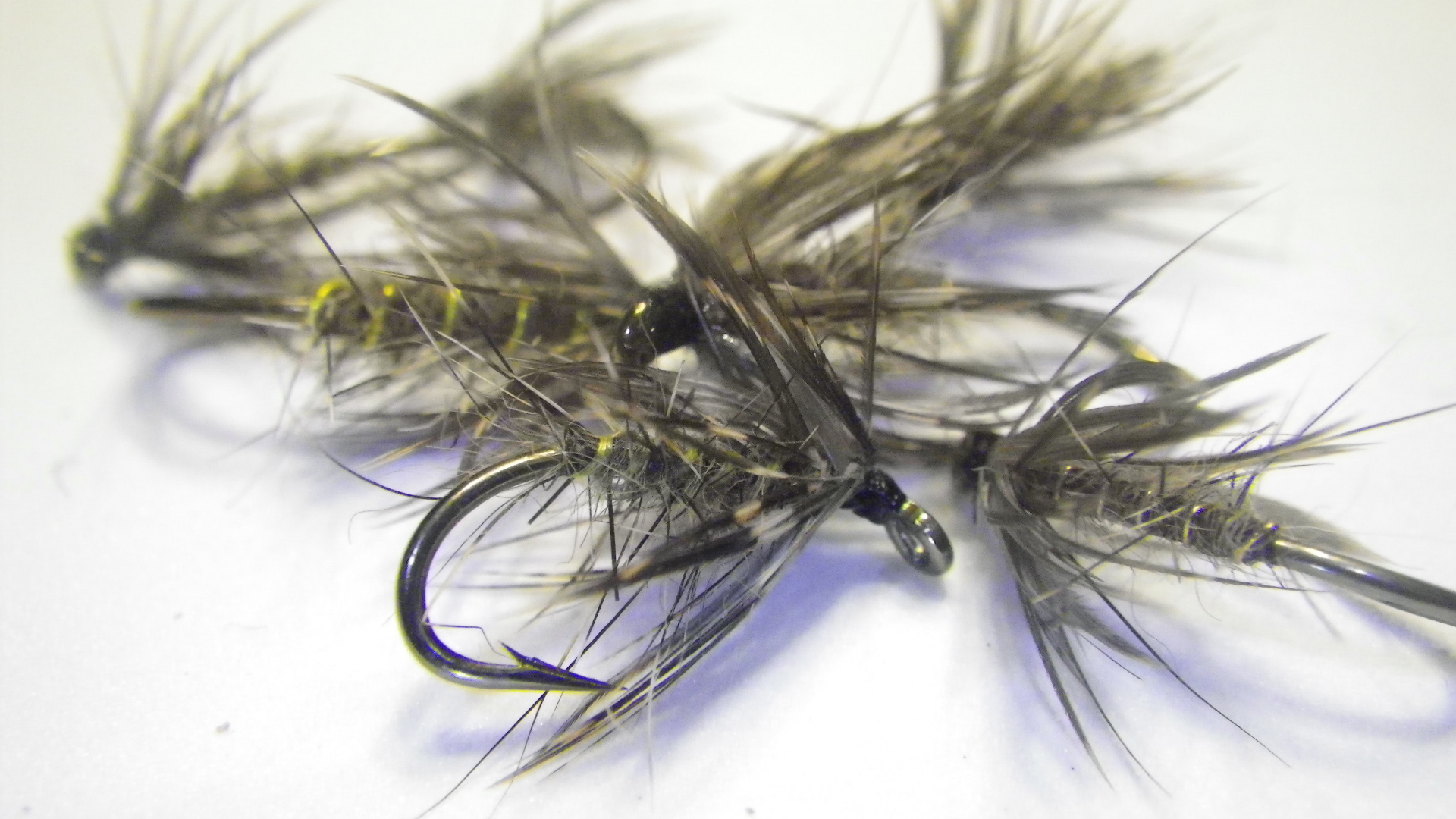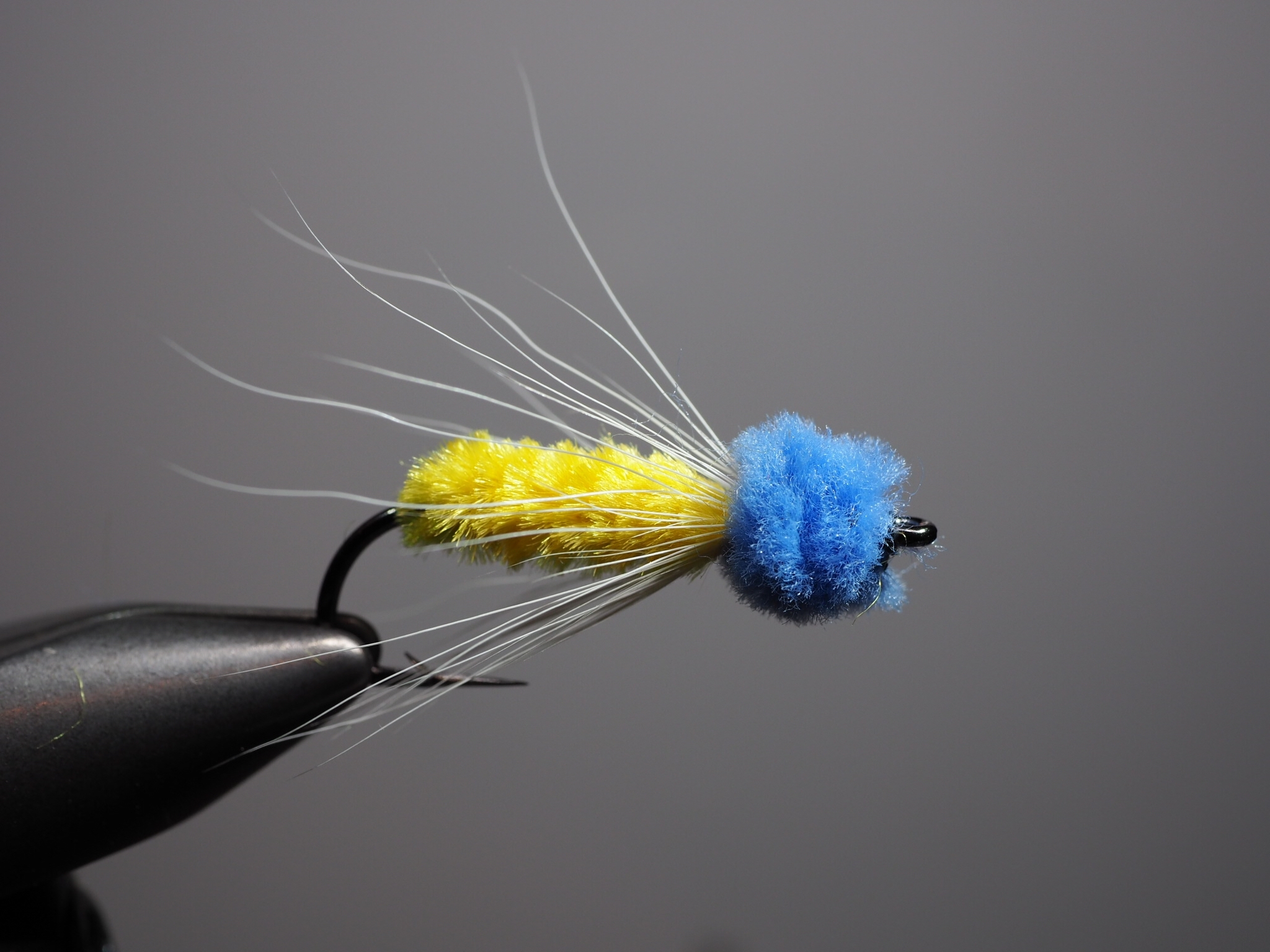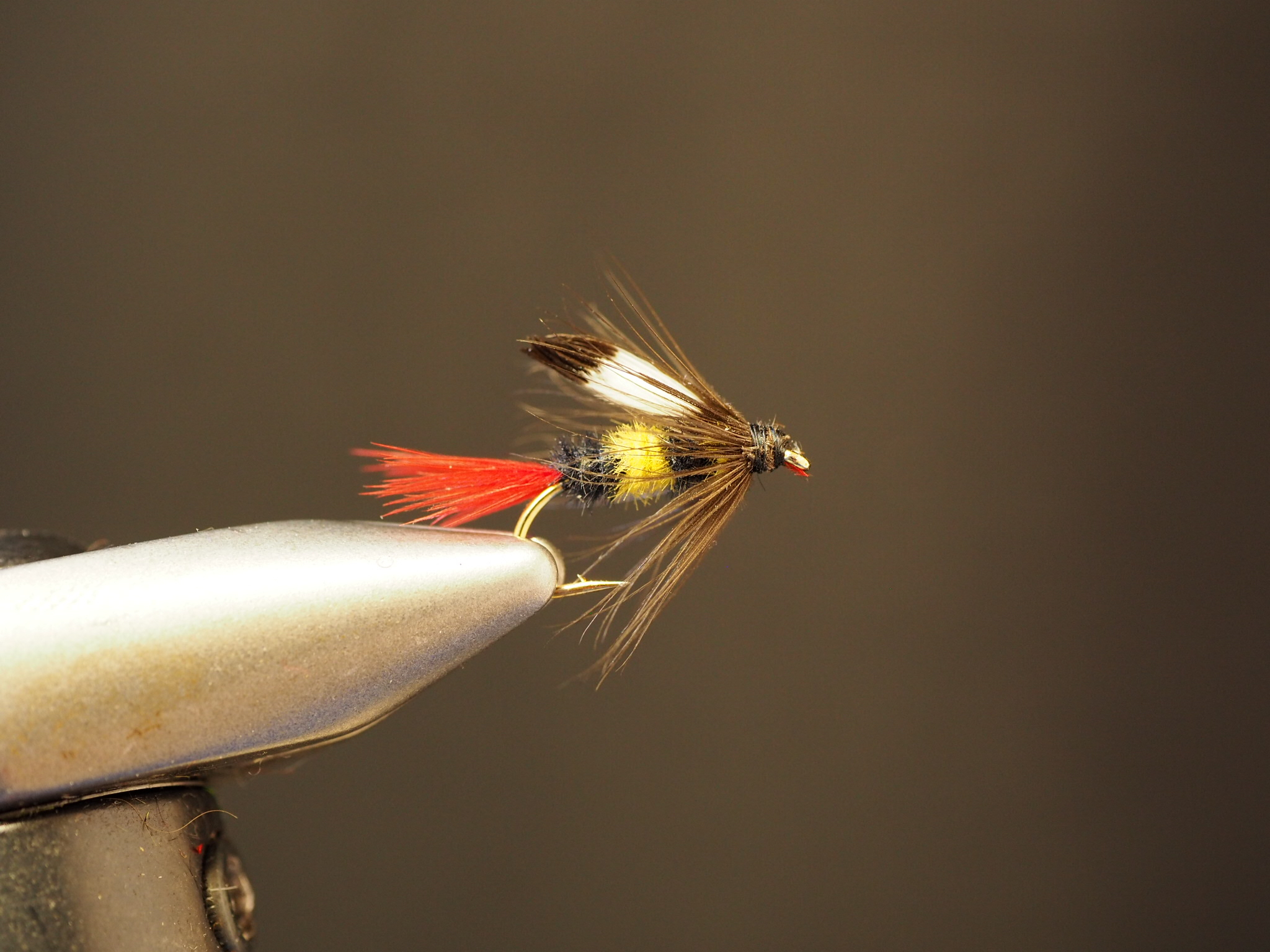I was recently asked if I had to go out on the water with only ten flies (god forbid!) what would they be. I gave it some thought, and this list is what I came up with. So without any further delay I present the Panfish On The Fly Top Ten Bluegill Flies.
#1 The Triangle Bug
Everyone loves the excitement of a fish taking a fly off the surface and I am no exception. If there is a possibility of catching fish on the surface, I always prefer to fish a floating fly. I may be able to catch more fish by fishing sub-surface but I am addicted to dry fly fishing and take advantage of the opportunity to do it whenever I can. The triangle bug sits low in the water and is perfect for those shallow water situations when big bluegills get spooky. The fly lands softly without spooking fish, and those long rubber legs are irresistible. The best part about this fly is its design. The triangle shape of this fly prevents small mouthed bluegill from swallowing it too deeply.
#2 Soft Hackles
Sometimes I just want to catch fish. As much as I love to watch a big bluegill grab a fly off the surface, I can not deny the effectiveness of a properly presented subsurface fly. Like any other fish, the bluegill does the vast majority of its feeding underwater. A soft hackle wet fly can be fished 12 months out of the year. It is a reliable producer the year round. By varying the size and the color you can imitate just about everything a bluegill eats!
Check out our Early Season Soft Hackle Selection
#3 Poppers
Poppers are a lot of fun to fish. When bluegills are looking up nothing beats a popper. The noise a popper makes on the surface can attract fish from a long distance. Poppers also make an excellent platform to suspend a subsurface fly off of. The popper/dropper method is a great way to cover all your bases, providing fish the option of either a topwater or subsurface fly. You will be surprised how many doubles you will catch with this method!
#4 The Green-Eyed Damselfly Nymph
Damselfly nymphs are present in every body of water I fish and they are a prime food source for bluegills. Although I always have some different damselfly nymphs in my fly box, I usually reach for this pattern, so if I had to pick just one, this would be it.
#5 The Mop Dragon
Like damselflies, dragonflies are found everywhere I fish. A dragonfly nymph is a little more of a meal than a damselfly for a bluegill. That’s what makes it one of my best big bluegill fly patterns. Bass seem to love them too. The Mop Dragon is not your average mop fly! It is a realistic dragonfly nymph pattern that is deadly on big panfish.
#6 The Wooly Worm
This classic pattern has been around forever and it is just as deadly today as it was a hundred years ago. A small wooly worm will catch bluegills all day long the hardest part is deciding what color to tie on!
#7 The Brim Killer
The original Brim Killer has been around for a long time. There was a time when you could find this fly in every local fishing department across the country. My version is tied a little differently, and is more durable and carefully weighted to produce a slow sinking pattern that is irresistible to big bluegill.
#8 The James Wood Bucktail
The James Wood Bucktail is a smallmouth bass pattern developed by Harry Murry (of Murray's Fly Shop in Edinburg, Virginia). The James Wood Bucktail is, in fact, based on a saltwater bonefish fly. The fly as tied here is supposed to imitate a baby sunfish. It does not look like a sunfish to me but the fish seem to think differently. It is a great big bluegill pattern and it also cleans up on crappie, perch, bass, and pickerel. This style of fly is so effective I have tied it in other color combinations to imitate immature pumpkinseeds, crappie, bass, and pickerel.
#9 The Panfish Wiggler
This pint-sized adaptation of a classic steelhead pattern has become a favorite of mine. Bead chain eyes get the fly down deep. It is an excellent choice for when fish are holding little deeper and you need a fly to get down to them. I’ll tie this pattern with a lead underbody when I need to get the fly down deep quickly.
#10 The McGinty Wet Fly
The McGinty is another classic trout fly that has found its way into my bluegill arsenal. The black and yellow color combination is particularly attractive to bluegills. An interesting fact about the McGinty is that it was initially tied as a largemouth bass pattern way back in 1883. No wonder it works so well in warm water!
While it is doubtful that you would find me on the water with only ten flies if I had a fly box loaded with these ten patterns I would not feel unprepared. I thought it was interesting that only two topwater patterns made this list. Naturally, I tie and fish a lot more topwater patterns but this selection of flies reflects the way I fish. If you want to catch more and especially larger fish, you need to target them where they feed the most, and that's under the surface.
I should mention that the recipes for all of these flies are on this website. You can find them on the pattern pages or just use the search function on the home page. If you have a top ten list, I would love to hear it. Leave a comment below or shoot me an email through the website’s contact form.









